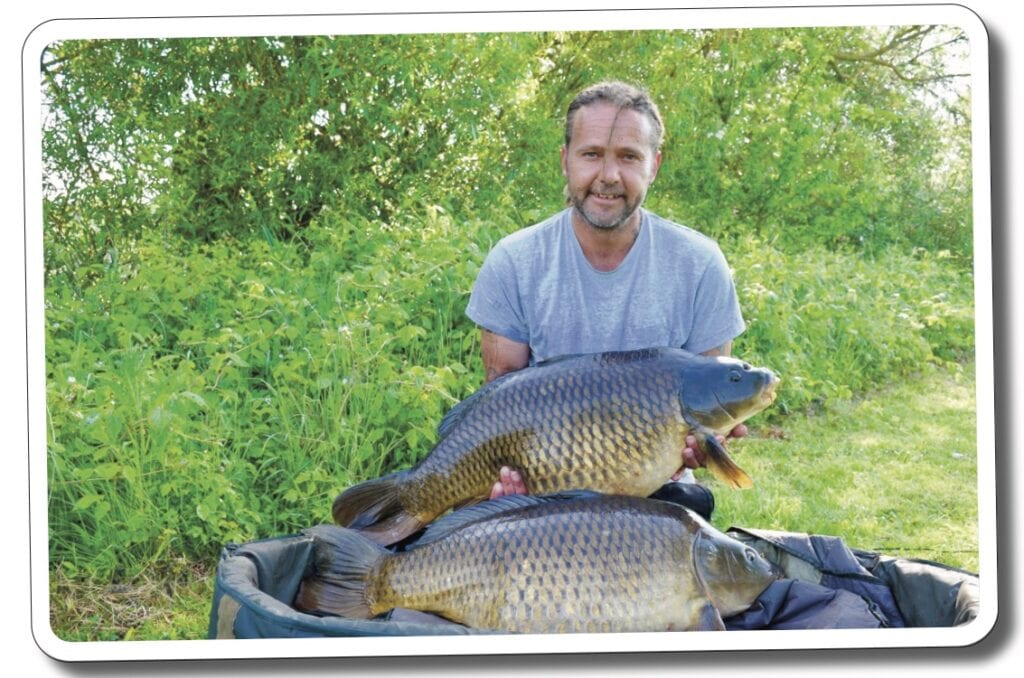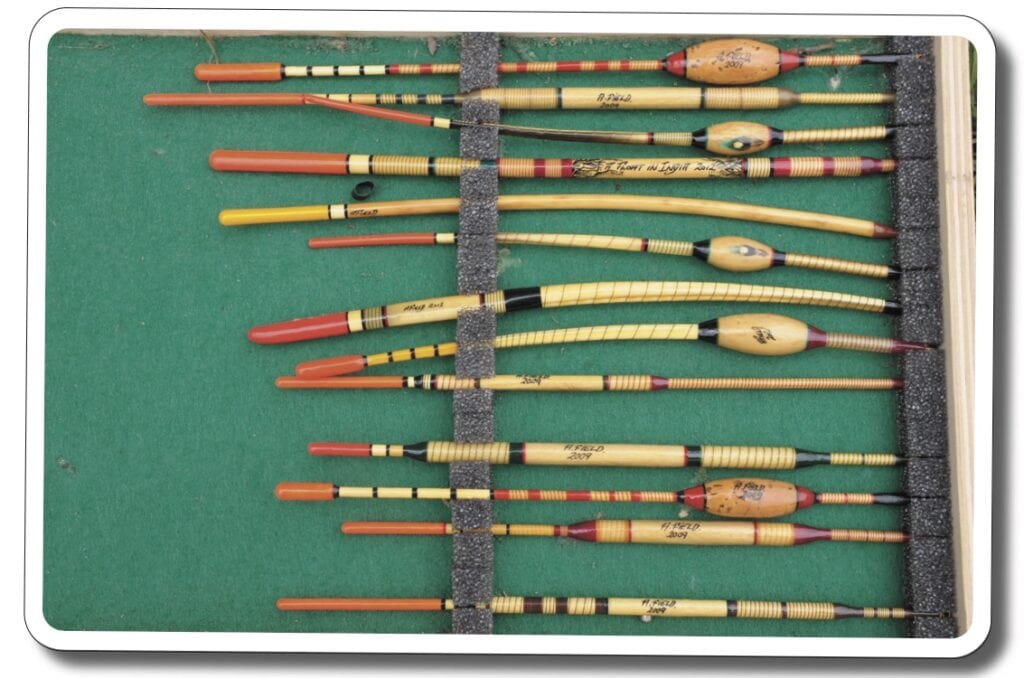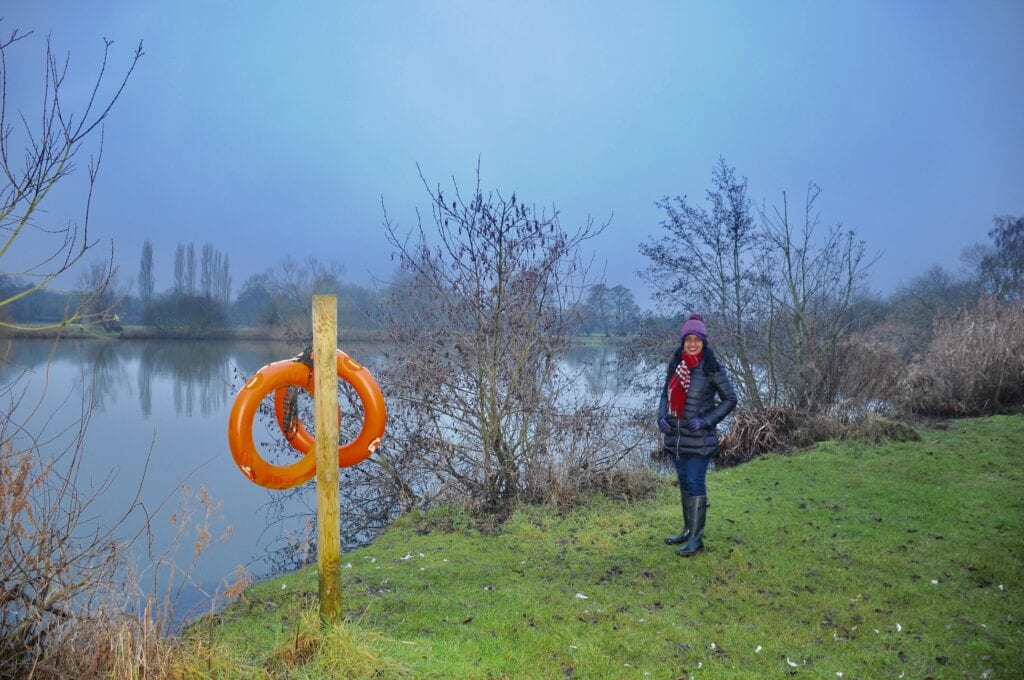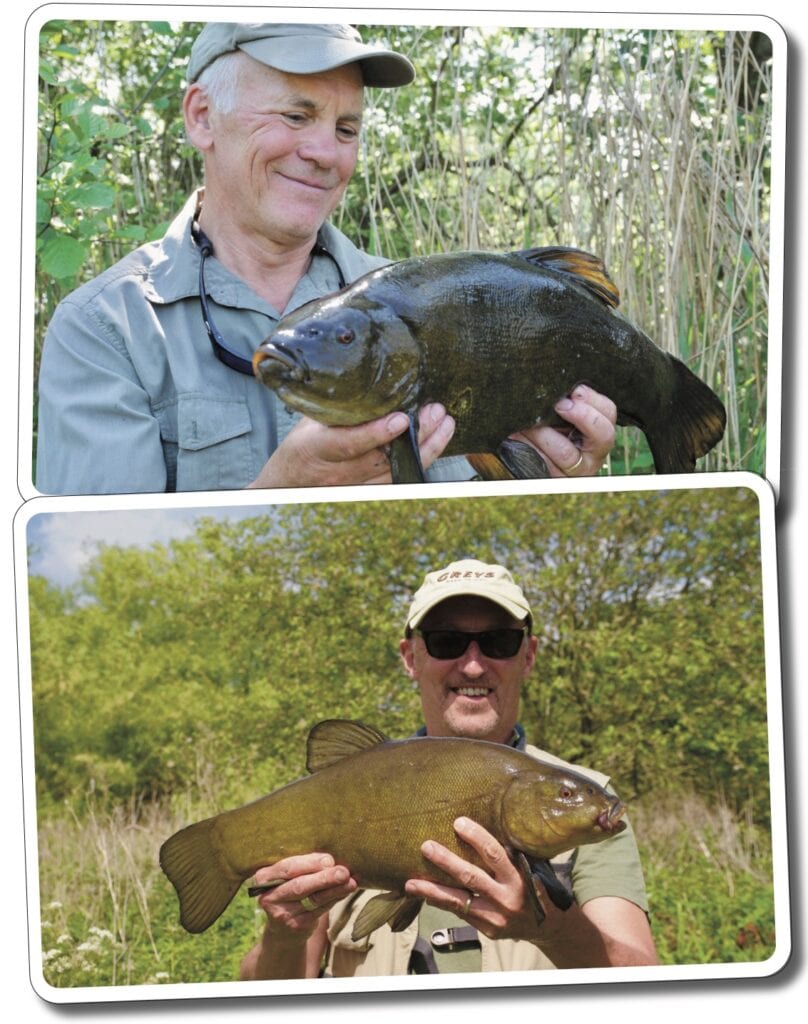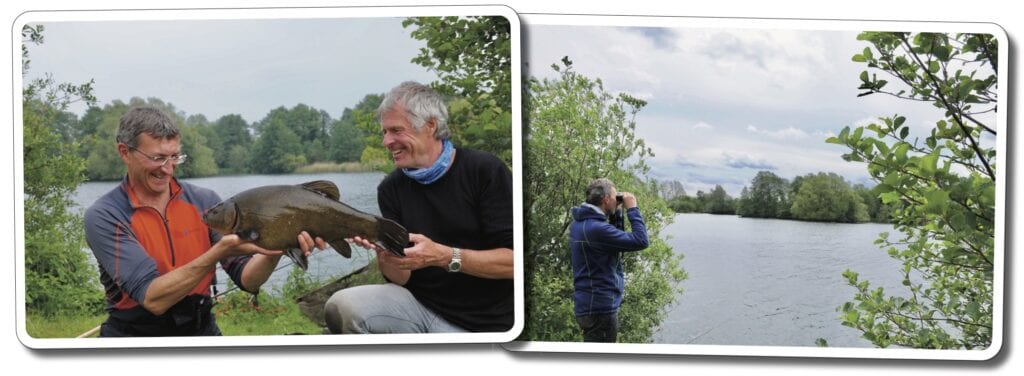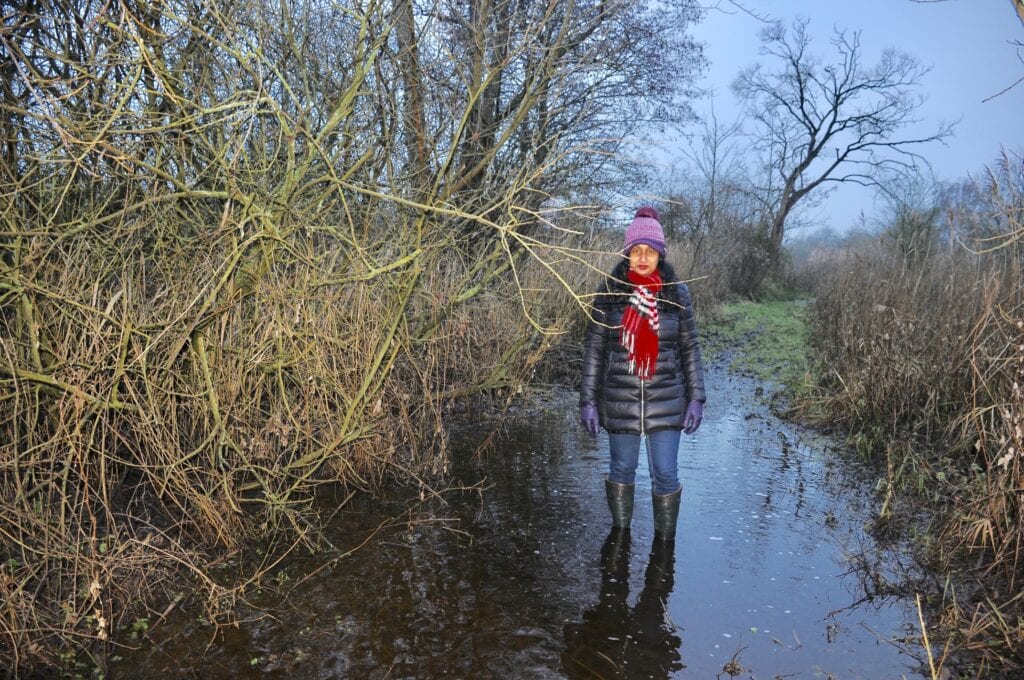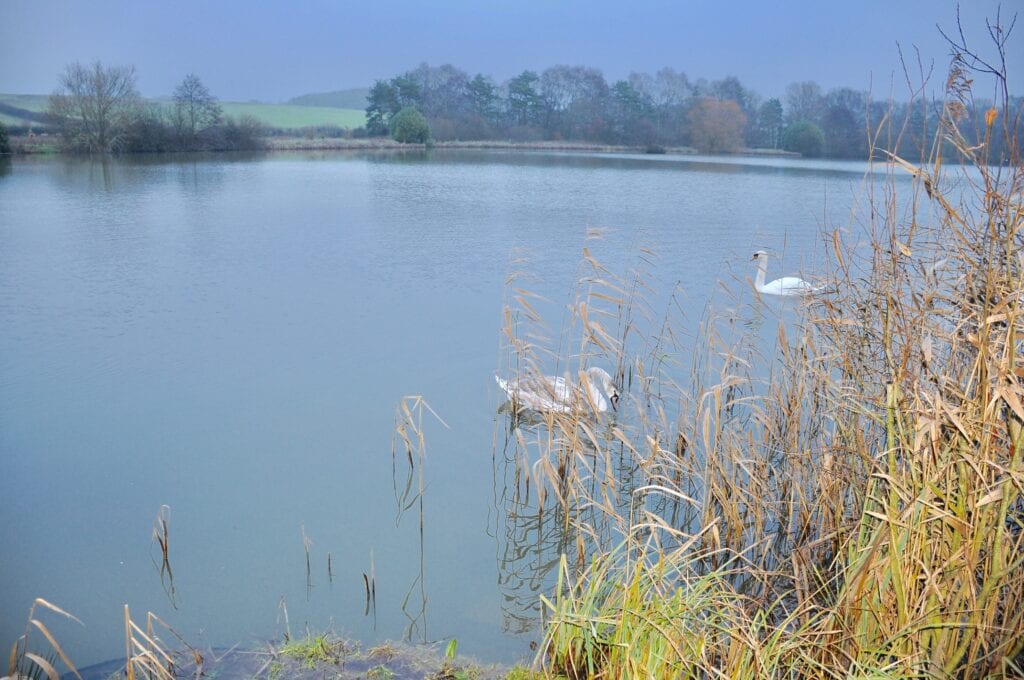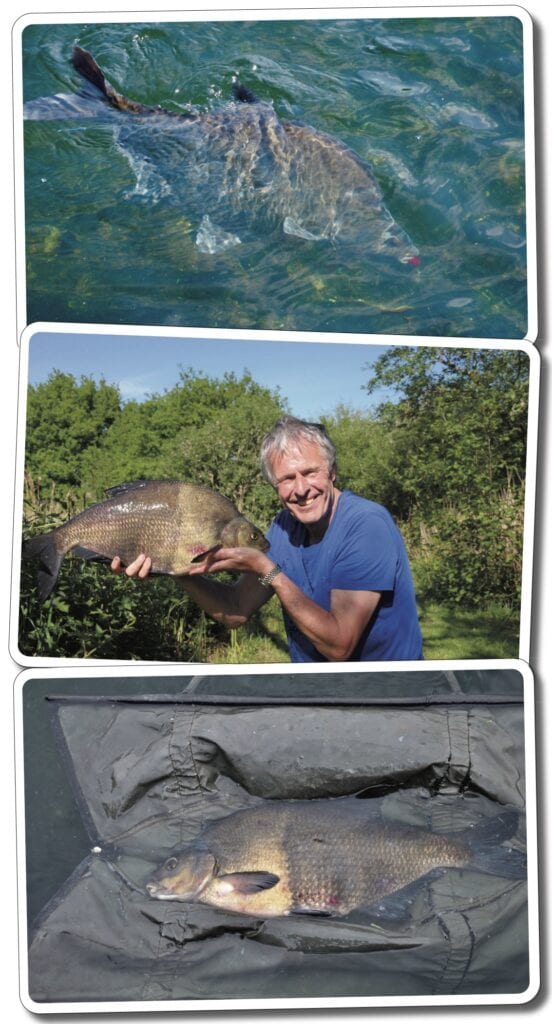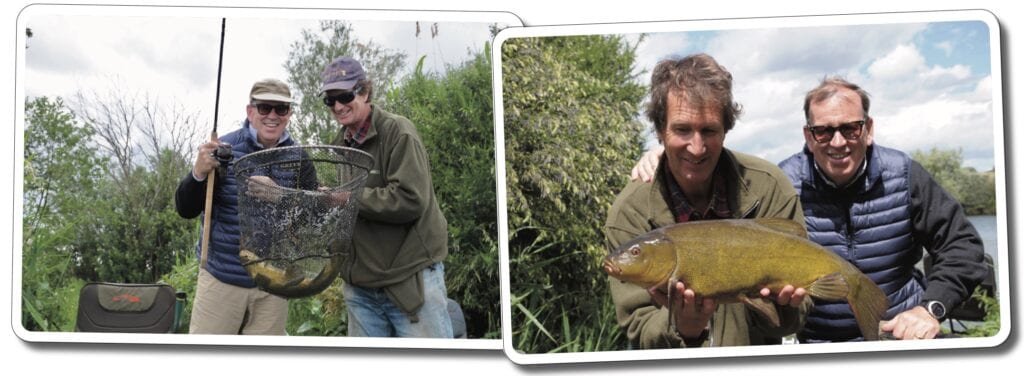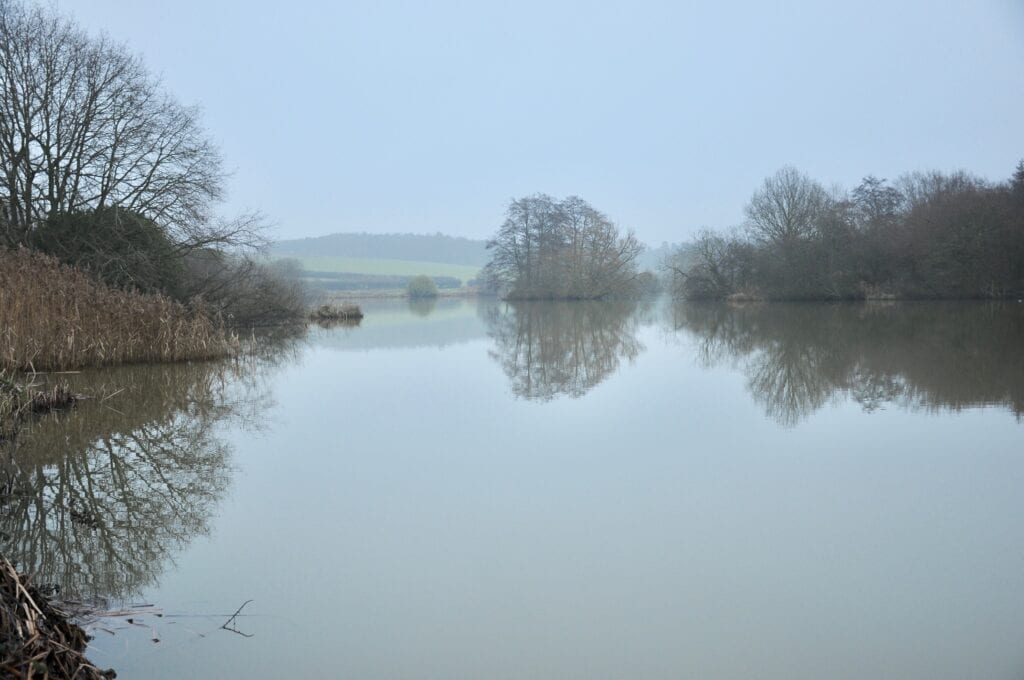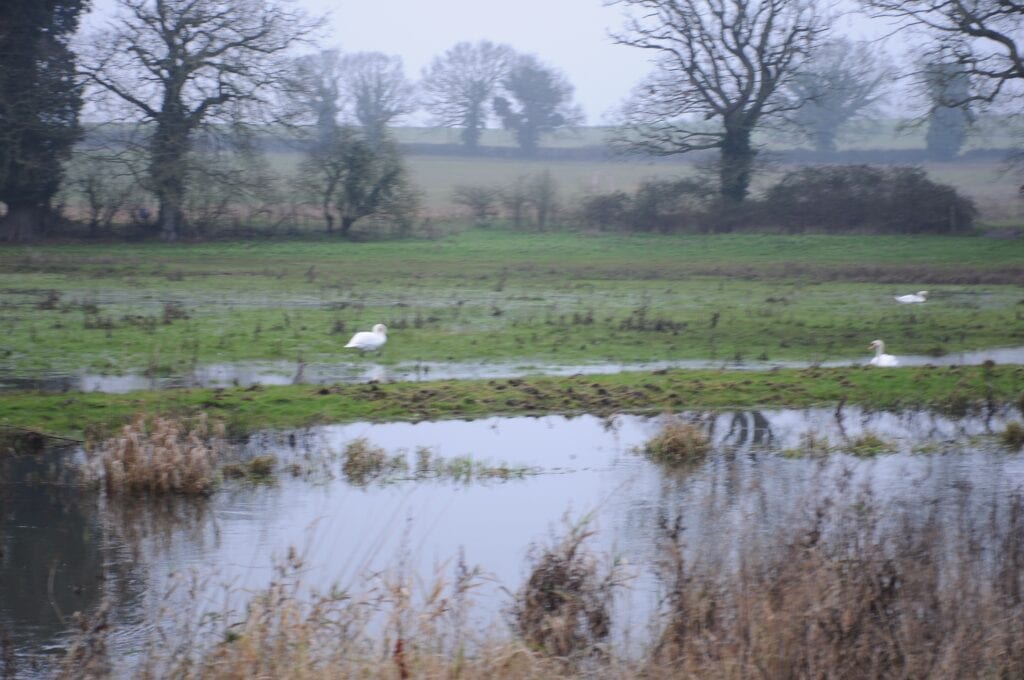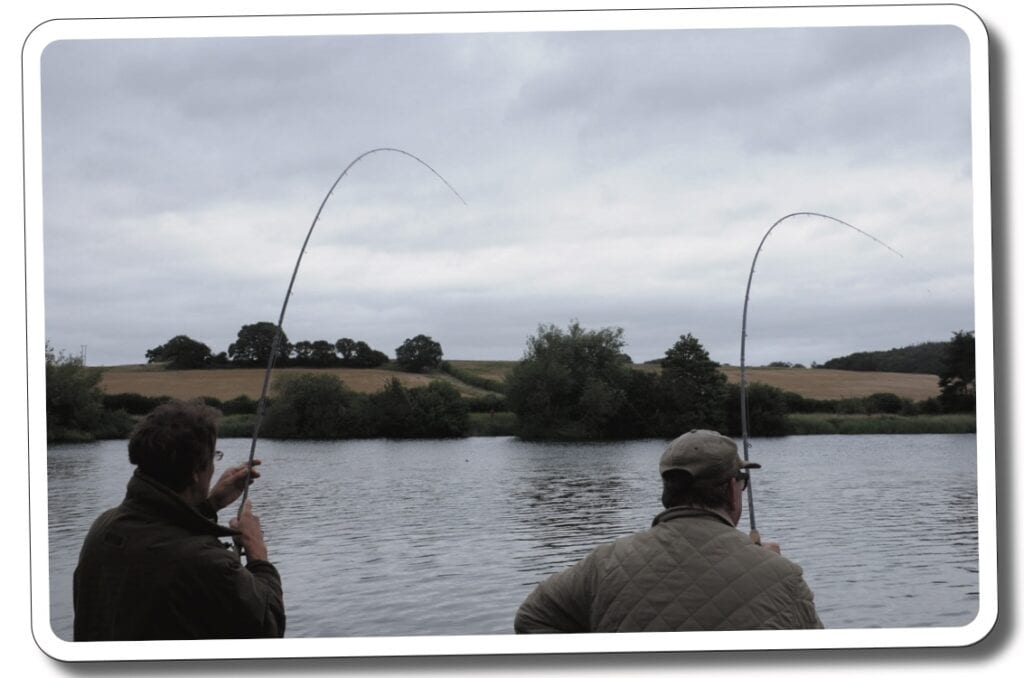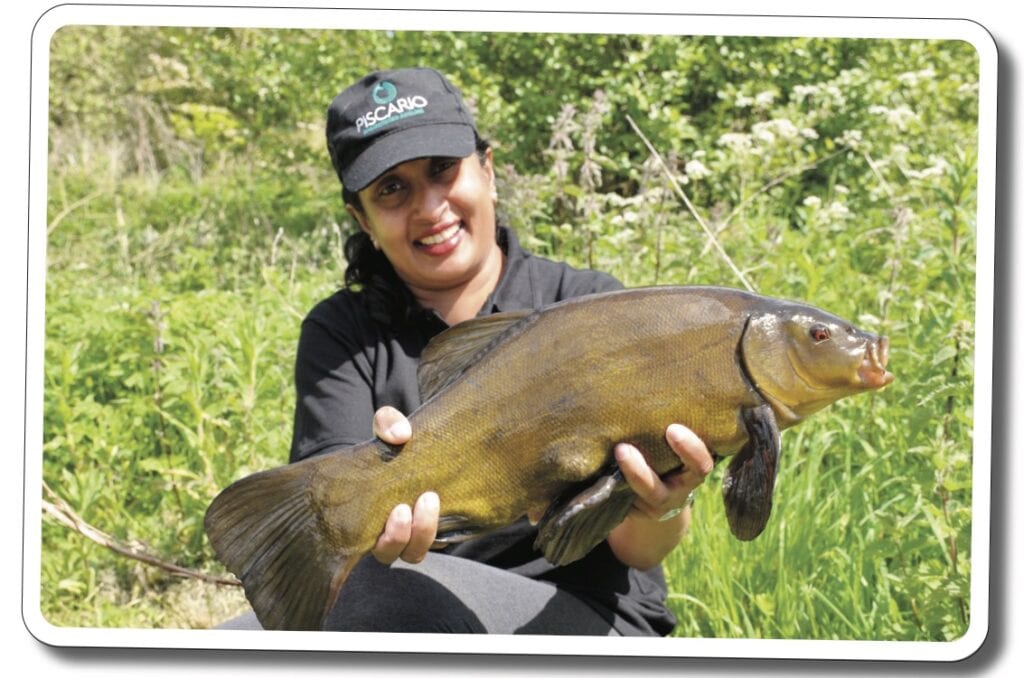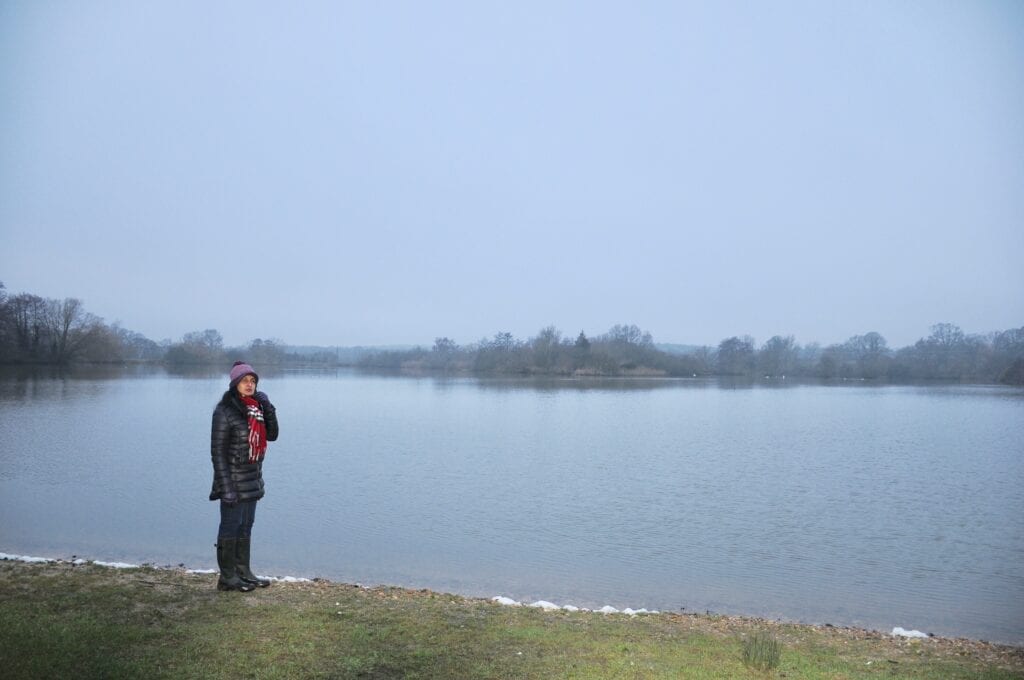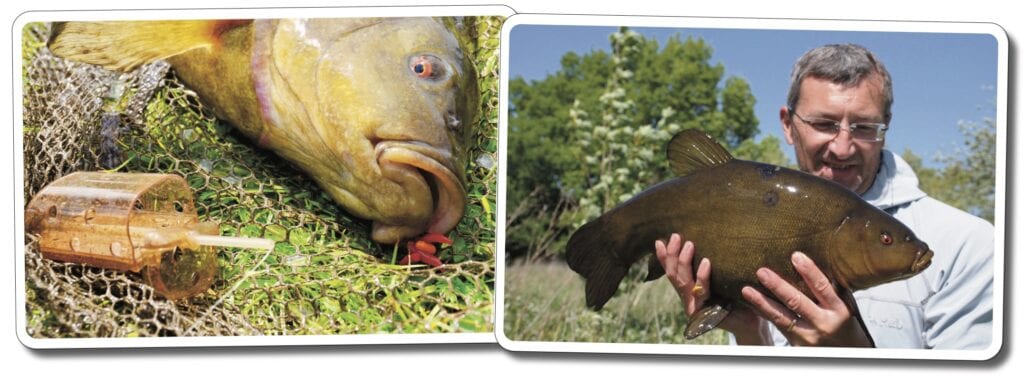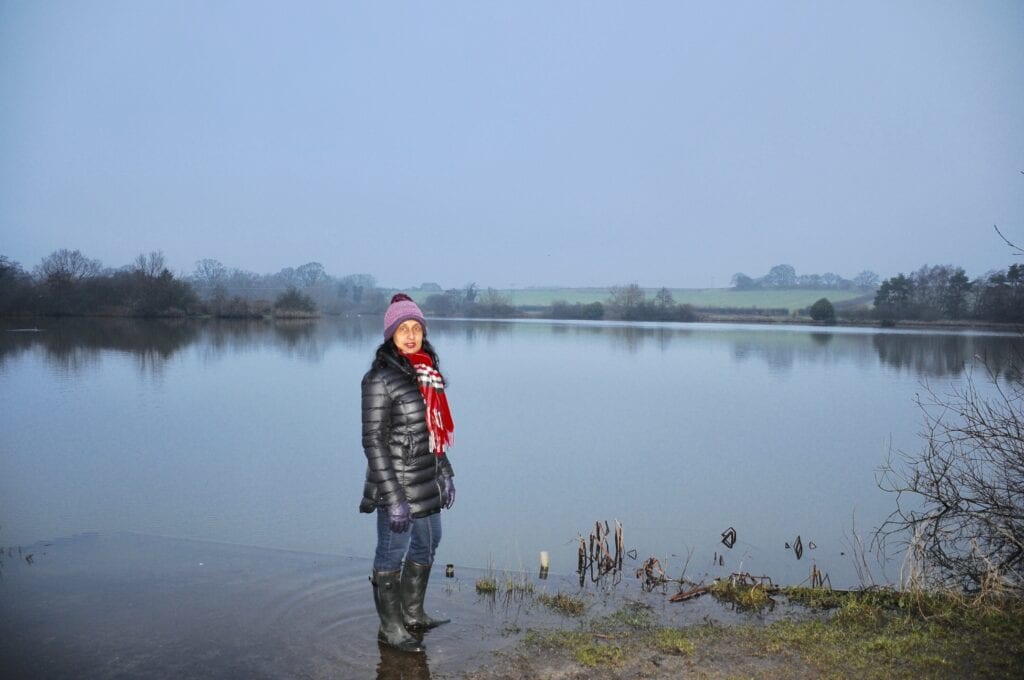Kingfisher Lake, Quarry Lane Lyng, Norfolk
Yet another lockdown is with us, meaning that for all of us there is either no fishing, or fishing limited and local. Our thought is to take you around waters that are famous and/or interesting, guiding you round the swims and features that have produced in the past, explaining why in the process. This way we hope to take you out of yourselves for a few minutes, and also provide hard fishing information whilst we are doing it.
First, let’s admit this is NOT our idea. Some of you might have been watching Winter Walks at 7.00pm on BBC4, in which we are guided through glorious countryside by a celeb, and you’ll know at once we have cribbed the concept! Second, if this idea does prove worthwhile, we would like to hear from you lot, and to be guided along your waters that mean so much to you. A stretch of river or canal. A lake, pit, pond or mere. It doesn’t matter. We just want to travel, if not by car, at least in our imaginations.
We have chosen Kingfisher Lake in Norfolk as our first venue for several reasons. It has been reasonably well known for 50 years, first as a trout water that produced big pike in the 80s and 90s, and this century as a carp water holding the one-time Norfolk record, as well as large tench, bream and perch. It is also a 22-acre lake that is full of features, and that alone makes it worth exploring. Today, it is run, by me (!) as a very small syndicate with limited access, as its primary function is a children’s outdoor centre. ‘Kingi’ is primarily a big fish water. Its list of PBs include pike to nearly 40, carp to nearly 50, tench to 13, bream to 19 and perch to 5…. pounds of course, not kilos! So, here we go…
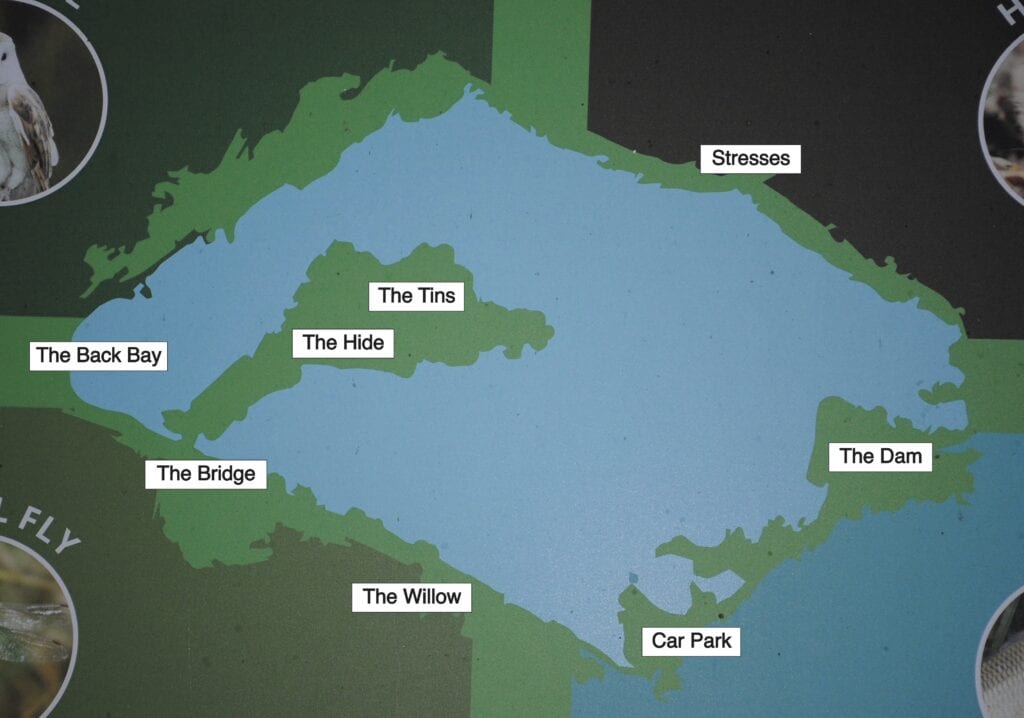

FRIDAY 8th JANUARY… Grey, drizzle in the air, and a periodic breeze from the North West. We begin at 2.30pm and the 0.75 mile round trip of the lake takes ’till 3.45pm, not long before dusk. My partner is wife Enoka and we begin at The Car Park. If you look at the map of the lake, our plan is to walk clockwise around the water, stopping off at the most productive of the swims. We are hoping to see some fish topping as the light fades, though the air temperature has never exceeded 2 degrees since morning. Given the cold, we expect wildlife sightings to be at a minimum.
THE WILLOW
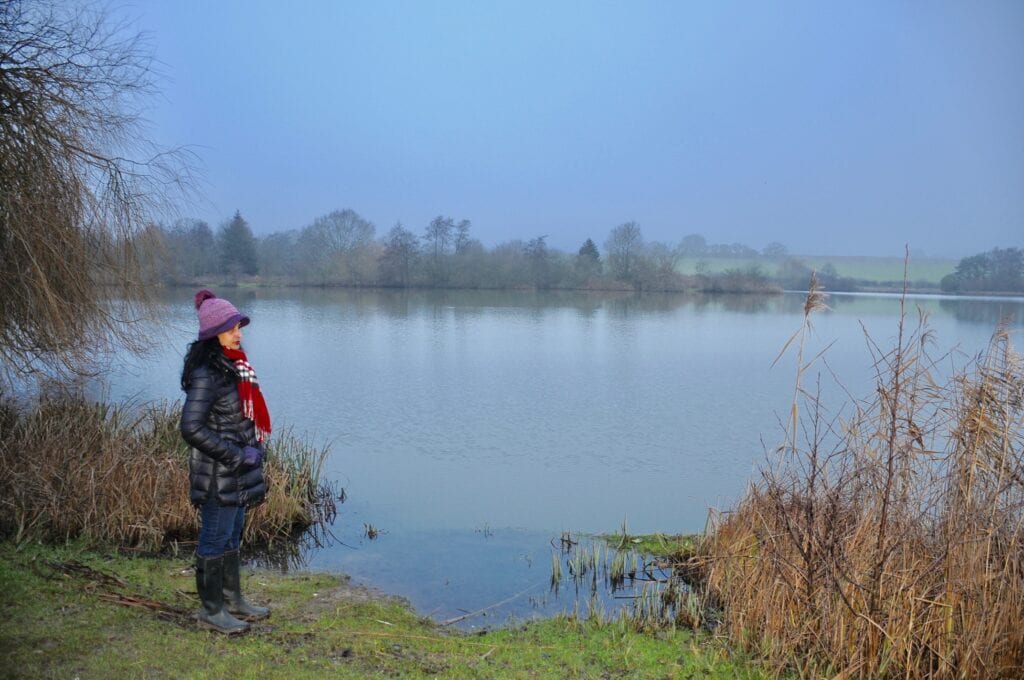

This is the first major swim you come to, situated on the Southern, stream bank of the lake. With a South Westerly behind you, it is possible to put a carp bait at well over 100 yards into the main basin of the lake. Here there are endless bars, troughs and plateaux to target, the result of haphazard digging during the lake’s construction in the 1940s. The minerals were used for runway construction, especially after the US entered the war and Norfolk became a base for attacks over Germany.
Because the swim is such a favourite with the carp boys I tend to take my tench/bream fishers elsewhere. I think that compromise is the key to a happy syndicate and we look after each other here. Mind you, the carpers pick up huge numbers of tench at range and bream, especially, like to be well out, especially in a wind.
BAD NEWS TODAY! Enoka and I disturb a dozen cormorants fishing close in. They struggle to lift their carcasses off the water and fly away low, croaking, only to land way out in safety. How I hate those birds.
THE BRIDGE
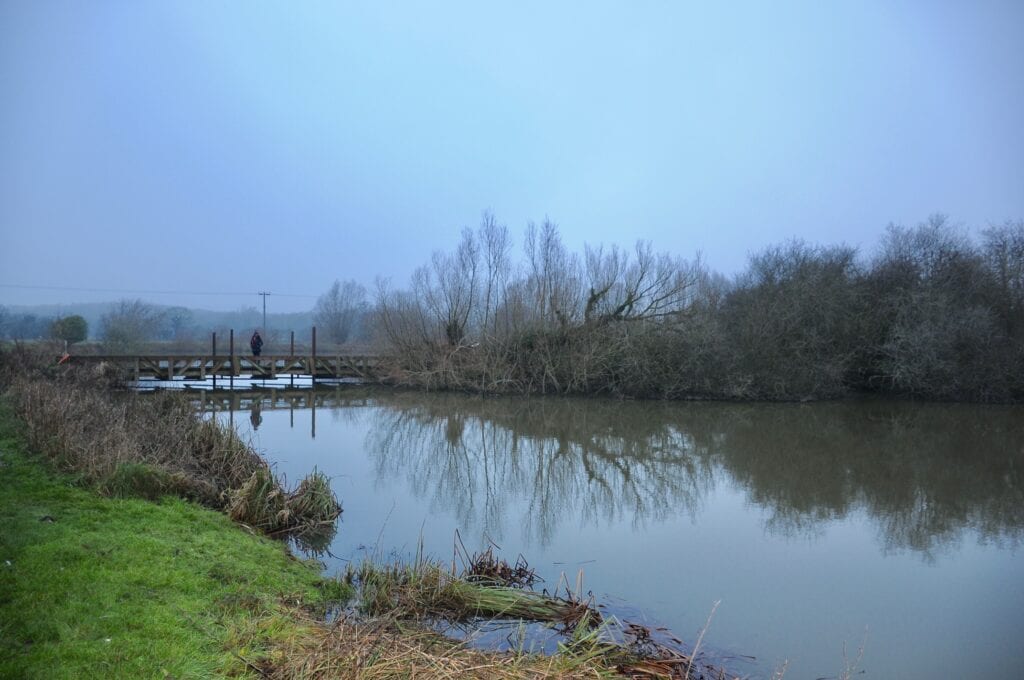

narrows between the bank and the Island…
Moving down the stream bank 150 yards, we come to The Bridge that connects us to the Island. It is an old construction dating back 70-plus years and its pillars are a magnet for big perch, especially in the near past. This is the perfect example of what I like to call a “pinch swim”, where the main lake narrows and funnels before opening up again into The Back Bay. The stream itself also empties into the lake at this point, only adding to the attraction. Any fish, carp, bream or tench, moving around the lake have to pass through this confined area, and carpets of bait laid either side of the Bridge often attract and pull fish down.
Opposite the stream entrance there is a huge, half-sunken willow, so yet another feature to make this swim mouth-watering indeed. Very often there are signs of major otter activity here as they feast on small fish come in from the stream. We are relieved to see that this predator at least is absent. Sadly, the recent floods have turned the water a murky brown so fish sightings are not possible… I’m sure we would have seen smaller pike waiting in the stream’s flow for small silvers coming in.
THE HIDE
Moving onto the Island, we find the land hugely boggy but crossable with care. We come to The Hide, perhaps my most adored swim these last ten years. The name comes from the days when duck shooting took place on the lake, but the eponymous hide was dismantled a while back. The swim is not that favoured by the carp boys so I have made it my own, for good reason. It is a big one, taking three, even four anglers, and that is nice for guiding. It is sociable of course, but it means all our bait is going into one area and everyone gets a crack at the hotspot… which gets hotter as a two/three day session develops.
There is a nice gully close in but the fish come at 40 yards, where a bar runs along the entire swim and beyond, out into the main body of the lake. Tench and bream follow the bar in constant shoals, come across the bait (that I’ll sometimes put out by canoe) and generally go down on it. If the weather is constant, Day 1 produces on average 10 to 20 fish, Day 2 20 to 40 fish, and Day 3 sometimes 50 fish plus. Nothing moves today, however. We leave with our memories.
THE TINS
At the end of the Island, Enoka and I come to The Tins, so called simply because the soft bank has been shored up by corrugated iron sheeting. There is little poetry in the coarse world when it comes to naming swims I guess. Call a spade a spade seems to be the way of it… unlike the salmon fraternity who seem to have a feel for the glamorous. My first Wye salmon came from Monk’s Run… which the barbel men now call The Car Park. Never mind, whatever the name, The Tins has done it for me in recent years.
The keys are two troughs, one at 10 yards, the second at about 40. Summer 2020 I loaded the first trough with boilies and Vitalin mix and kept tench shoals coming in to visit right until the autumn. Even better, daily baiting along the second trough with a Spomb held an enormous bream shoal resident for two whole months. Mid-afternoon when the tench went quiet, we simply switched from float to feeder, and bream to 15 came our way. I realise my good fortune.
On a large lake with small fishing numbers, you can hive swims off like this, virtually for your own personal use if you make deals with your fellows. An enormous bonus. Today, all we see is a family of swans and the glorious view to the fields to the North of the lake.
THE BACK BAY
Retracing our steps to the Bridge, we turn right and walk around the 7-acre Back Bay. Carp anglers do well here from time to time I know, but for me, tench and bream fishing has been uniformly dull. This is the least feature-filled part of the lake, and even the bloodworm beds have not produced for me when we have fished over that.
The Wensum does, however, run along its boundary, sometimes only ten yards away. What memories there. Enoka and I wander to look and today it is still high, in the meadows here and there. A couple of white egrets are picking for worms on the far bank and more cormorants watch us 150 yards away from their roost in a dead tree. I decide I am happier with my memories than the present and we move on.
STRESSES
We are on the North bank now, halfway along where the Wensum all but meets the lake. The whole area of 2 to 3 acres is a maze of shallows, plateaux, eroding islands and thin gullies, following bars often covered by less than three feet of water. This is a late spring/summer haven. The carpers love to fish it tight, close in and on the top with floaters too. Because it is popular, I leave the swim alone, generally. All part of the bargain.
However, when the carp are spawning, the carpers move off and the tench move in to feast on the eggs being shed. On occasion, we have had electrifying sport fishing close to the spawning action, where the tench are gorging themselves. We are ultra-careful however. Any suggestion or suspicion we are disturbing the carp and we are away. Today, everything is quiet apart from the curtain of cormorants that rises up and returns back to The Willow where Enoka and I first found them.
THE DAM AND CAR PARK
We are getting close to the end of our walk. I had hoped to see the last of the sinking sun and give Enoka a glimpse of why Kingi is so loved by those who know it. There is a hint of light but that is all. Fingers are cold. Night is not far off. I have lumped these two swims together as they are top carp pitches and I keep clear. Again, they both give tremendous access to the main body of the lake and to the endless array of features there.
For me, the two swims are all about pike memories, back in the 80s and 90s. The deep channel running alongside The Dam was the scene of many a great pike capture, including two different fish of 39.08. My own 36.06 came to a trout livebait fished under a drifter float launched from The Car Park swim in a strong South Westerly. Trout stocking ended twenty five years ago when the Flyfishers moved off, and the last of the colossal pike came out shortly after. Today, a ten pounder is a good fish here.
An owl is calling from the poplars to our left. There are a couple of muntjac coming out of the shadows, but that is all the valley has shown us. The cold and lockdown have kept the anglers away, and you feel this great lake is sleeping, watching, waiting for the spring to bring new life, new hope. Enoka and I leave, quiet, brimming with memories, full of love for a special place. Our tour is ended…












